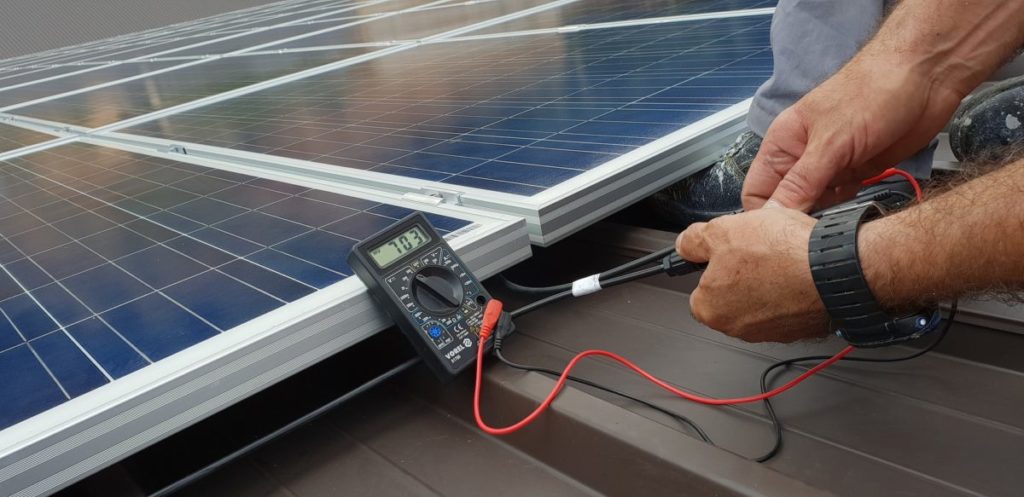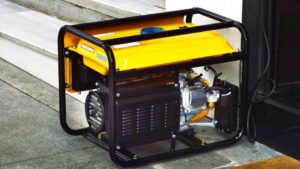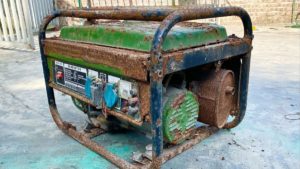 grid Solar Panel System" width="1000" height="485" />
grid Solar Panel System" width="1000" height="485" /> grid Solar Panel System" width="1000" height="485" />
grid Solar Panel System" width="1000" height="485" />
Solar power has become increasingly popular as a sustainable and reliable source of energy, particularly for off-grid locations.
However, installing a solar panel system can seem daunting without the proper guidance.
This guide is designed specifically for beginners who want to learn how to wire an off-grid solar panel system efficiently and safely.
Inside, you’ll find step-by-step instructions, diagrams, and tips on how to choose the right components and troubleshoot any issues that may arise during installation.
Whether you’re a DIY enthusiast or a professional installer, this guide will provide you with the actionable information you need to confidently tackle an off-grid solar panel project.
Before designing your solar panel system, it’s important to understand your energy needs. This includes calculating your daily energy usage and determining the number of solar panels you’ll need to meet that demand.
This involves calculating your daily energy usage, which can be done by assessing your energy consumption patterns and identifying the appliances and devices that use the most energy in your home or business.
You should also consider factors such as your location, the time of year, and any energy-intensive activities you may engage in.
Once you have a clear understanding of your energy needs, you can determine the number of solar panels you’ll need to meet that demand.
This will help you determine the appropriate size and number of solar panels, as well as the appropriate amount of battery storage, if necessary.
Proper planning and sizing of your solar panel system will help you make the most of your investment and ensure that you have a reliable and efficient source of clean energy for years to come.
There are many types of solar panels available, including monocrystalline, polycrystalline, and thin-film. Each type has its own strengths and weaknesses, so it’s important to choose the one that best fits your needs.
When it comes to choosing the right type of solar panel for your needs, there are several factors to consider.
Monocrystalline solar panels are made from a single crystal of silicon and are known for their high efficiency and long lifespan.
They are the most expensive type of solar panel, but they can provide the highest energy output over their lifespan.
Polycrystalline solar panels, on the other hand, are made from multiple crystals of silicon and are less expensive than monocrystalline panels.
They are still highly efficient, but they may not be as durable as monocrystalline panels.
Thin-film solar panels are made from a thin layer of photovoltaic material that is less expensive and easier to produce than traditional solar panels.
They are not as efficient as monocrystalline or polycrystalline panels, but they are a good option for those on a budget.
Ultimately, the best type of solar panel for you will depend on your specific needs and budget.
It’s important to consider factors such as the size of your solar array, the amount of sunlight your location receives, and the amount you are willing to spend when choosing the right type of solar panel for your needs.
A charge controller is responsible for regulating the flow of energy from the solar panels to the battery bank. There are two main types of charge controllers
A charge controller is a important component in any off-grid or grid-tied solar power system, responsible for regulating the flow of energy from the solar panels to the battery bank.
Its primary function is to prevent overcharging or undercharging of the batteries, ensuring their optimal performance and longevity.
There are two main types of charge controllers available in the market today: Pulse Width Modulation (PWM) and Maximum Power Point Tracking (MPPT).
PWM charge controllers are the most common type used in solar power systems.
They work by rapidly switching the solar panel’s voltage on and off, controlling the amount of energy that is fed into the battery.
PWM charge controllers are simple in design and relatively inexpensive, but they have limited flexibility and efficiency.
MPPT charge controllers, on the other hand, are more advanced and efficient.
They are able to optimize the power output of the solar panels by adjusting their voltage and current to match the battery’s requirements.
MPPT charge controllers are more expensive than PWM controllers, but they offer higher efficiency, faster charging, and better adaptability to different battery types and sizes.
There are two main types of charge controllers available, PWM and MPPT, each with its own advantages and disadvantages.
When choosing a charge controller, it is essential to consider the specific needs of your solar power system and select the appropriate type based on factors such as cost, efficiency, and adaptability.
Your battery bank will store the energy generated by your solar panels. It’s important to choose a battery that is compatible with your charge controller and solar panels, and that can meet your energy needs. Deep cycle batteries are the best choice for off-grid solar systems.
When it comes to selecting a battery for your off-grid solar system, it’s essential to choose a deep cycle battery that is compatible with your charge controller and solar panels, and that can meet your energy needs.
Deep cycle batteries are designed to provide a steady flow of power over a long period, making them ideal for off-grid solar systems.
These batteries are made with a special type of lead alloy that allows them to withstand the repeated deep discharges and recharges that are common in off-grid systems.
Deep cycle batteries have a longer lifespan and can withstand high temperatures, making them a reliable choice for long-term energy storage.
When choosing a deep cycle battery, it’s important to consider the size of your solar panel array, the size of your energy needs, and the type of charge controller you are using.
A larger battery bank will provide more energy storage and longer back-up time, but it will also be more expensive.
It’s important to find the right balance between battery size, energy needs, and budget.
When it comes to compatibility, it’s essential to choose a battery that is compatible with your charge controller and solar panels.
Some charge controllers are only compatible with certain battery types, so it’s important to check the specifications before making a purchase.
It’s important to consider the warranty and maintenance requirements of the battery before making a final decision.
With the right battery, your off-grid solar system will provide reliable, clean energy for your home or business.
Wiring an off-grid solar panel system involves connecting the solar panels, charge controller, and battery bank. It’s important to use the correct wiring and connections to ensure the system is safe and efficient.
Wiring an off-grid solar panel system is a important aspect of harnessing the power of the sun to meet your energy needs.
To begin, you will need to connect the solar panels to the charge controller, which regulates the flow of energy from the panels to the battery bank.
It is essential to use the correct wiring and connections to ensure the system is safe and efficient.
This includes using appropriate gauge wire and the proper connectors and fittings for each component.
For example, MC4 connectors are commonly used for connecting solar panels and charge controllers, while battery terminals may require ring connectors or buss bars.
It is important to use a daisy chain configuration for the solar panels to minimize voltage loss and ensure optimal energy output.
Proper wiring and connection of the off-grid solar panel system will not only ensure safe and efficient operation but also provide years of reliable service.
A disconnect switch allows you to isolate the solar panel system from the rest of your home’s electrical system. This is important for safety and maintenance reasons.
A disconnect switch is a important component in any solar panel system, allowing homeowners to safely and easily isolate the system from the rest of their home’s electrical system.
This is important for both safety and maintenance reasons.
First and foremost, the disconnect switch provides a critical safety feature by disconnecting the solar panel system from the home’s electrical grid in the event of a power surge or other malfunction.
This helps protect both the solar panel system and the rest of the home’s electrical system from damage.
The disconnect switch allows for easy maintenance and repair of the solar panel system, as it allows homeowners to isolate the system and work on it without worrying about causing damage to the rest of the home’s electrical system.
Furthermore, the disconnect switch can also help homeowners save money on their energy bills.
By isolating the solar panel system from the rest of the home’s electrical system, homeowners can ensure that they are using only the solar-generated electricity during peak sun hours, rather than relying on the traditional grid.
This can result in significant energy savings, especially during periods of high sun exposure.
Overall, the disconnect switch is a valuable feature in any solar panel system, providing both safety and financial benefits for homeowners.
A surge protector can protect your solar panel system from power surges and spikes, which can damage your equipment and reduce its lifespan.
Installing a surge protector for your solar panel system is an essential step in ensuring the long-term health and performance of your equipment.
Power surges and spikes can occur at any time, often caused by lightning strikes, faulty wiring, or sudden changes in electrical current.
These sudden increases in voltage can damage your solar panels, inverters, and other equipment, leading to costly repairs and replacements.
A surge protector acts as a barrier between your solar panel system and the grid, absorbing or blocking these harmful surges and spikes before they can reach your equipment.
This not only protects your equipment from damage but also extends its lifespan, helping you to achieve a higher return on investment and enjoy a more reliable and efficient solar panel system.
When selecting a surge protector, look for one that is specifically designed for solar panel systems, and ensure that it is compatible with your equipment and wiring configuration.
With the right surge protector in place, you can enjoy peace of mind knowing that your solar panel system is well-protected from power surges and spikes, and that it will continue to perform at its best for years to come.
Once your solar panel system is installed, it’s important to test it regularly to ensure it’s working properly. You should also maintain the system regularly to keep it running efficiently and extend its lifespan.
To ensure that your solar panel system is working at its best and providing you with the maximum amount of clean energy, it’s important to test it regularly.
This involves monitoring the system’s performance, checking for any issues or malfunctions, and making any necessary adjustments.
Regular testing can help identify any problems early on and prevent more costly repairs down the line.
Maintaining your solar panel system is just as important as testing it.
This includes cleaning the panels to ensure they are free of debris, inspecting the inverters and other components for any signs of wear and tear, and checking the system’s wiring and connections for any loose or damaged parts.
By regularly testing and maintaining your solar panel system, you can ensure that it runs efficiently and extends its lifespan.
In fact, according to a study by the National Renewable Energy Laboratory, proper maintenance can increase the lifespan of a solar panel system by up to 20%.
So, make sure to test and maintain your solar panel system regularly to get the most out of your investment.
Hey there! If you’re the type who loves going down the rabbit hole of information (like we do), you’re in the right spot. We’ve pulled together some cool reads and resources that dive a bit deeper into the stuff we chat about on our site. Whether you’re just killing time or super into the topic, these picks might just be what you’re looking for. Happy reading!
Hey there! I'm James. I'm Senior Editor here at Practical Off-Grid Living. That's a fancy name I gave myself to say I'm the guy who writes most of the stuff on here. For the past several years, I've been really interested in off-grid living and how it can bring you closer to nature and relaxed living. I'm also a big fan of Marvel movies and Star Trek. Yeah, huge nerd.


